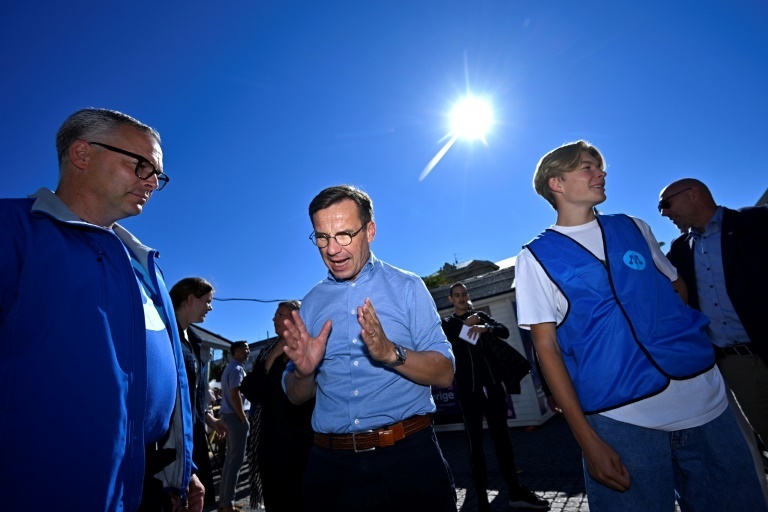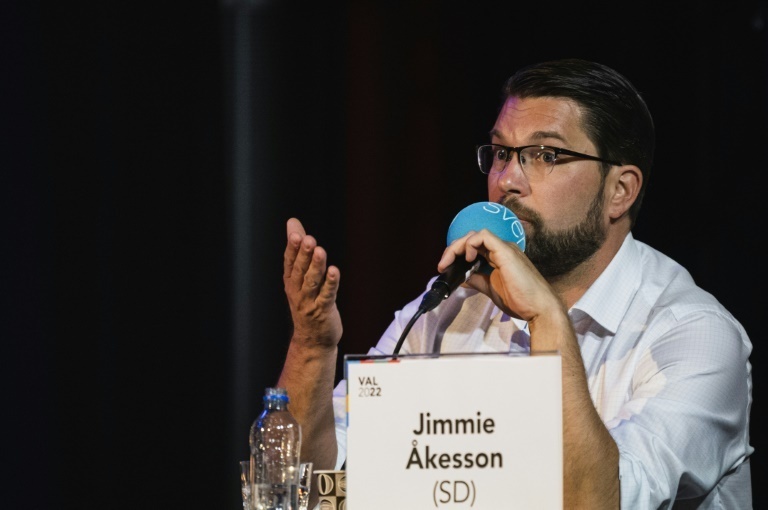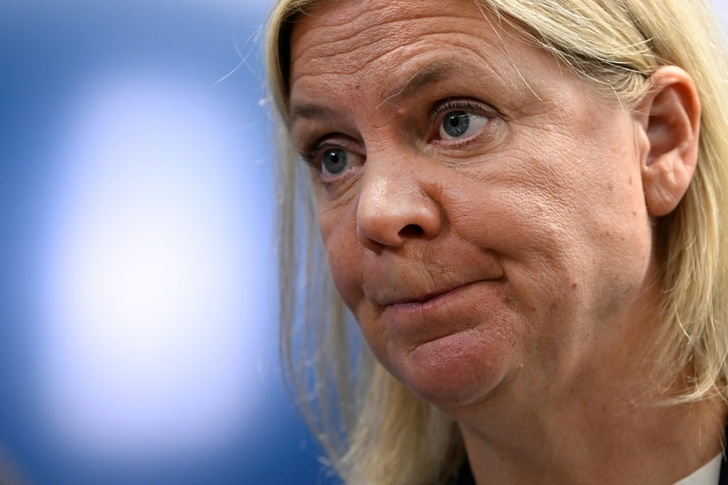Swedish Prime Minister Magdalena Andersson, the head of the opposition conservative Moderates Ulf Kristersson, and far-right leader Jimmie Akesson face off as the three main candidates in Sunday's general election.
- 'Bulldozer' PM vying to keep the left in power -
Andersson came to power in November 2021 with the aim of breathing new life into the Social Democrats and ended up leading the charge for the nation's historic NATO membership bid.
Sweden's first woman prime minister despite the country's reputation as one of the most feminist in the world, the 55-year-old replaced Stefan Lofven after he retired from politics.
The former swimming champion served as finance minister for seven years, earning the nickname "The bulldozer" for her blunt manner, which can rub some the wrong way in a country deeply attached to consensus.
Initially hesitant about joining NATO, Andersson made up her mind several weeks after Russia's invasion of Ukraine, convincing her party to abandon its longstanding opposition after two centuries of Swedish military non-alignment.
"She has managed to maintain, and even strengthen, the party's position and voter support," political scientist Ulf Bjereld said.
Often clad in navy suits with her straight blonde hair tucked behind her ears, Andersson has campaigned with the slogan "Sweden can do better".
She has vowed to defend Swedes' cherished welfare state and pursued the party's toughening stance on immigration.
"Integration has failed", she said in April after immigrant youths clashed with police.
On the international scene, her thorniest task has been negotiating with Turkey.
Ankara has threatened to block Sweden's NATO application, accusing Stockholm of harbouring Kurdish "terrorists".
A first obstacle was lifted in June, but Turkey has yet to ratify Sweden's membership in the Atlantic alliance.
If she loses the election, she will become Sweden's shortest-serving prime minister since 1936.
- The conservative welcoming the far-right -

The 58-year-old is gambling that his historic welcoming of the once-pariah far-right Sweden Democrats into the right-wing fold will pay off and supply the majority he needs in parliament.
A former gymnast with horn-rimmed glasses and clean-cut looks, Kristersson is making his second attempt to become prime minister.
After the 2018 election, he was given a shot at forming a government but failed to secure a majority. The Moderates' and their traditional centre-right allies refused to collaborate with the Sweden Democrats, who were then considered political "pariahs".
By December 2019, Kristersson agreed to hold exploratory talks with the far-right. Their cooperation has deepened since then, and the Christian Democrats and, albeit to a lesser extent, the Liberals have followed suit.
His critics, including Centre Party leader Annie Loof, have since accused him of "selling out" to the far-right, recalling his promises to never do so.
Kristersson defends the tie-up as "my side of politics".
A Tintin fan with a degree in economics, Kristersson wants to introduce a cap on Sweden's generous social benefits to give people more incentive to enter the labour market.
A second failure to become prime minister could spell the end for him as party leader.
- Nationalist Akesson leads far-right in from the cold -

With his impeccably coiffed brown hair, glasses and neatly-trimmed beard, the casually-dressed 43-year-old looks like your average Swede.
That's par for the course for someone who transformed an often-violent neo-Nazi movement known as "Keep Sweden Swedish" into a nationalist party with a flower as its logo.
"He wants to give the impression that he's an ordinary guy ... who grills sausages, talks normally and goes on charter trips to the Canary Islands," Jonas Hinnfors, a political science professor at Gothenburg University, told AFP.
His party, which first entered parliament in 2010 with 5.7 percent of the ballots and is now polling around 20 percent, has drawn voters from both the conservative Moderates as well as the Social Democrats, especially among working class men.
The far-right could for the first time be part of a right-wing coalition in parliament.
Akesson once said Muslims were "the biggest foreign threat since World War II" and the party previously lobbied for Sweden to quit the European Union.
But the party has over the years tried to tone down its rhetoric and policies, like other nationalist parties in Europe.
Akesson has been credited with his party's meteoric rise, but his success has come at a price.
In 2014 he admitted he was addicted to online gambling and went on six-month sick leave for burnout.
bur-map/po/bp
© Agence France-Presse
Your content is great. However, if any of the content contained herein violates any rights of yours, including those of copyright, please contact us immediately by e-mail at media[@]kissrpr.com.
Source: Story.KISSPR.com

